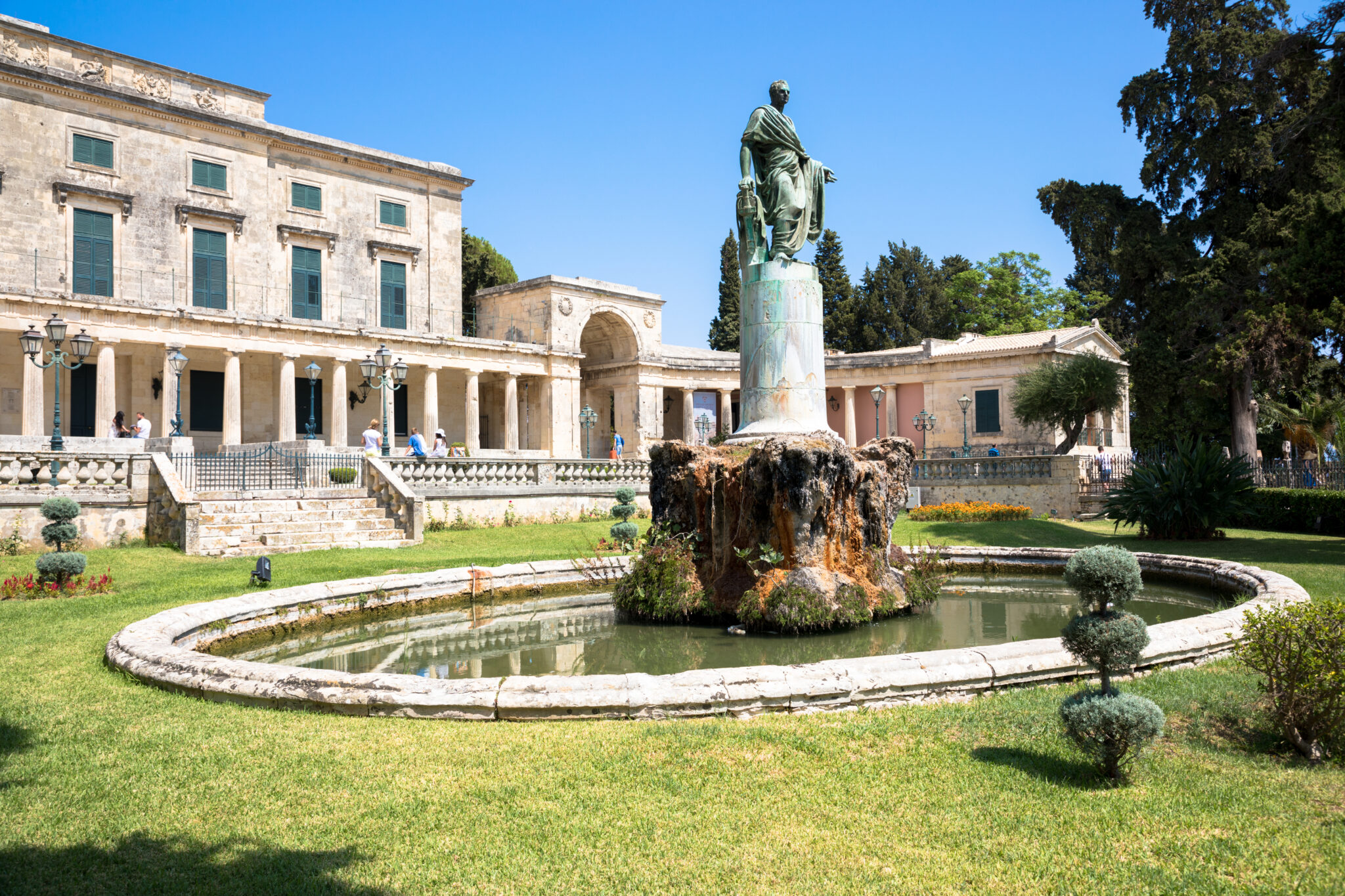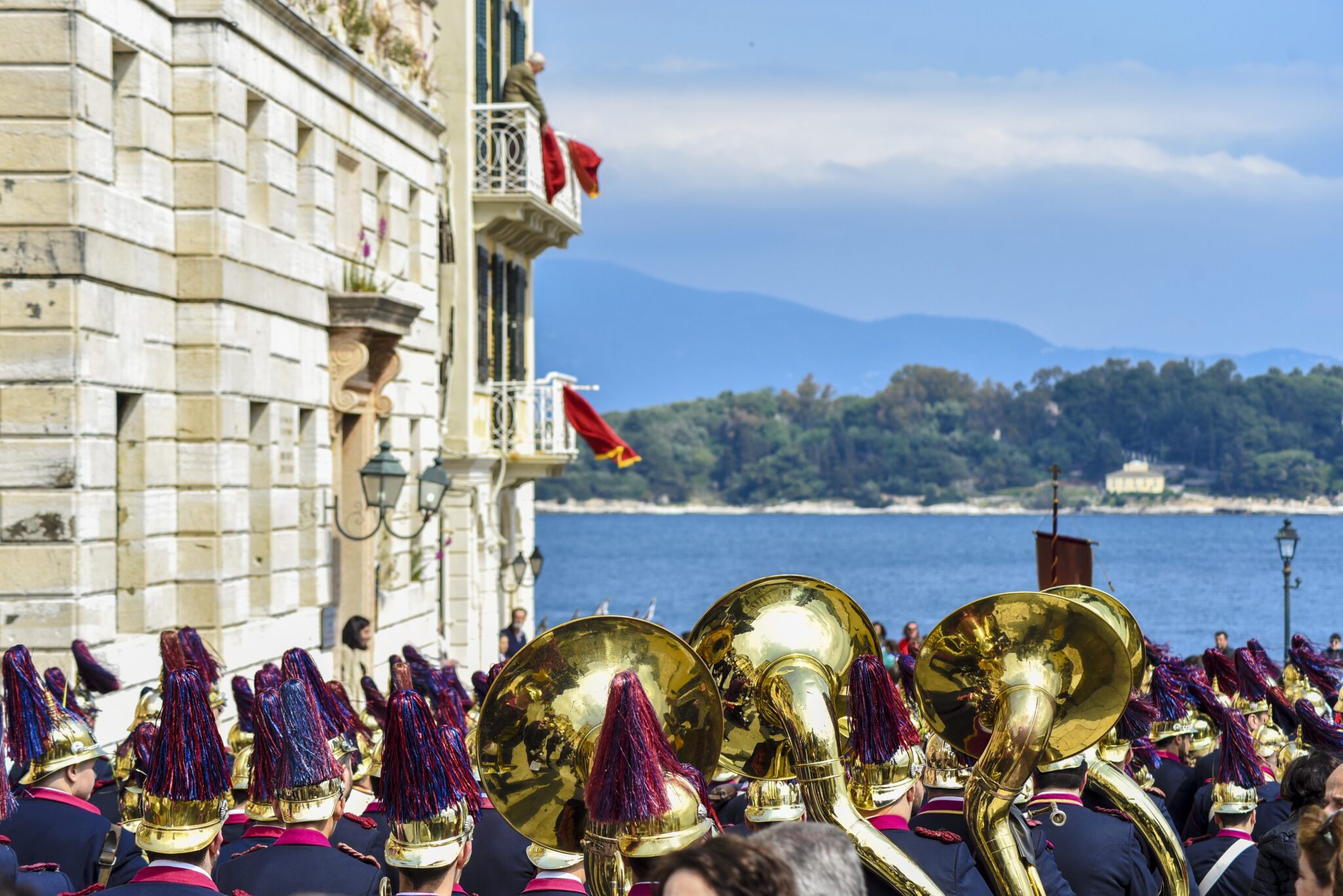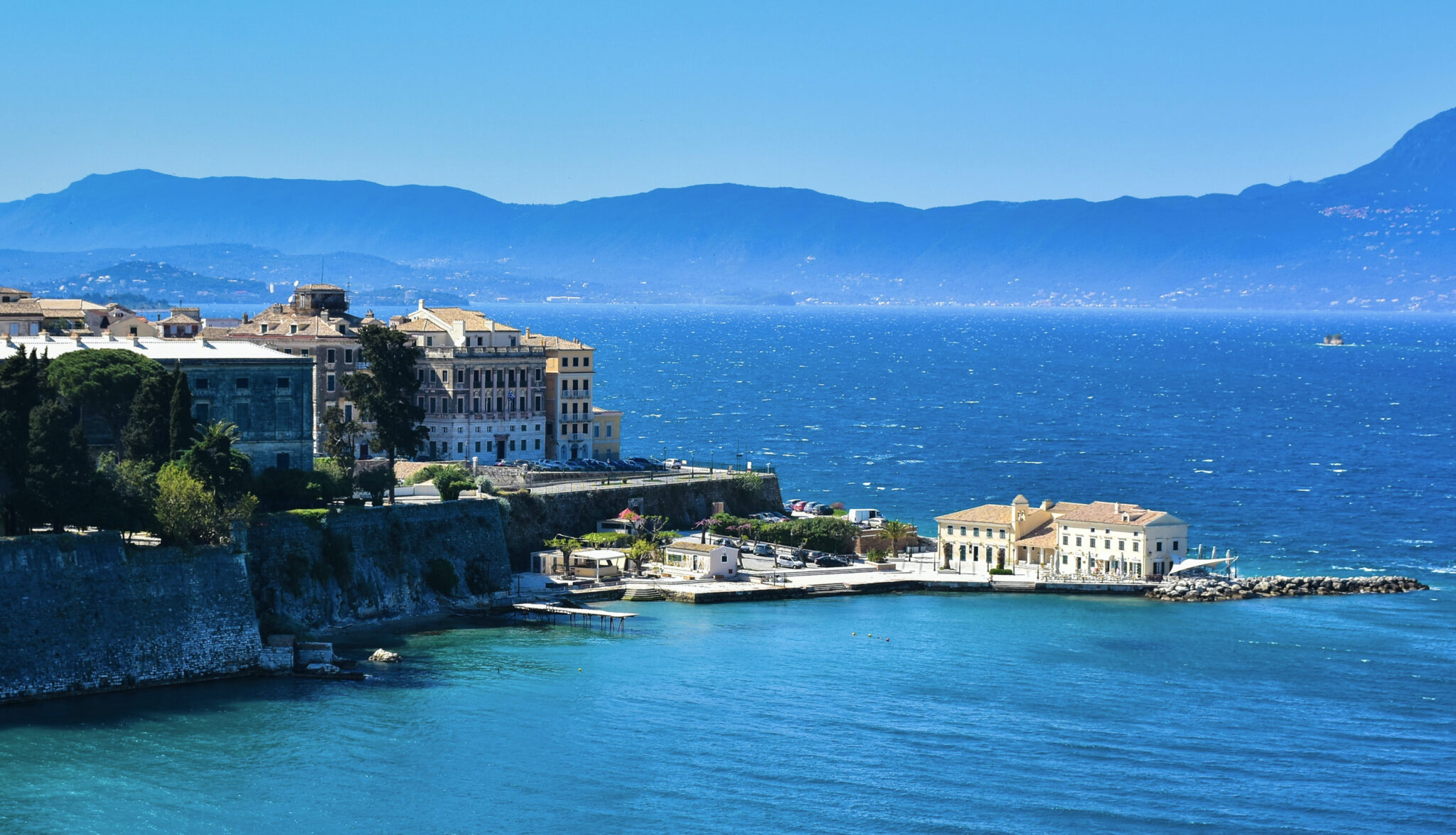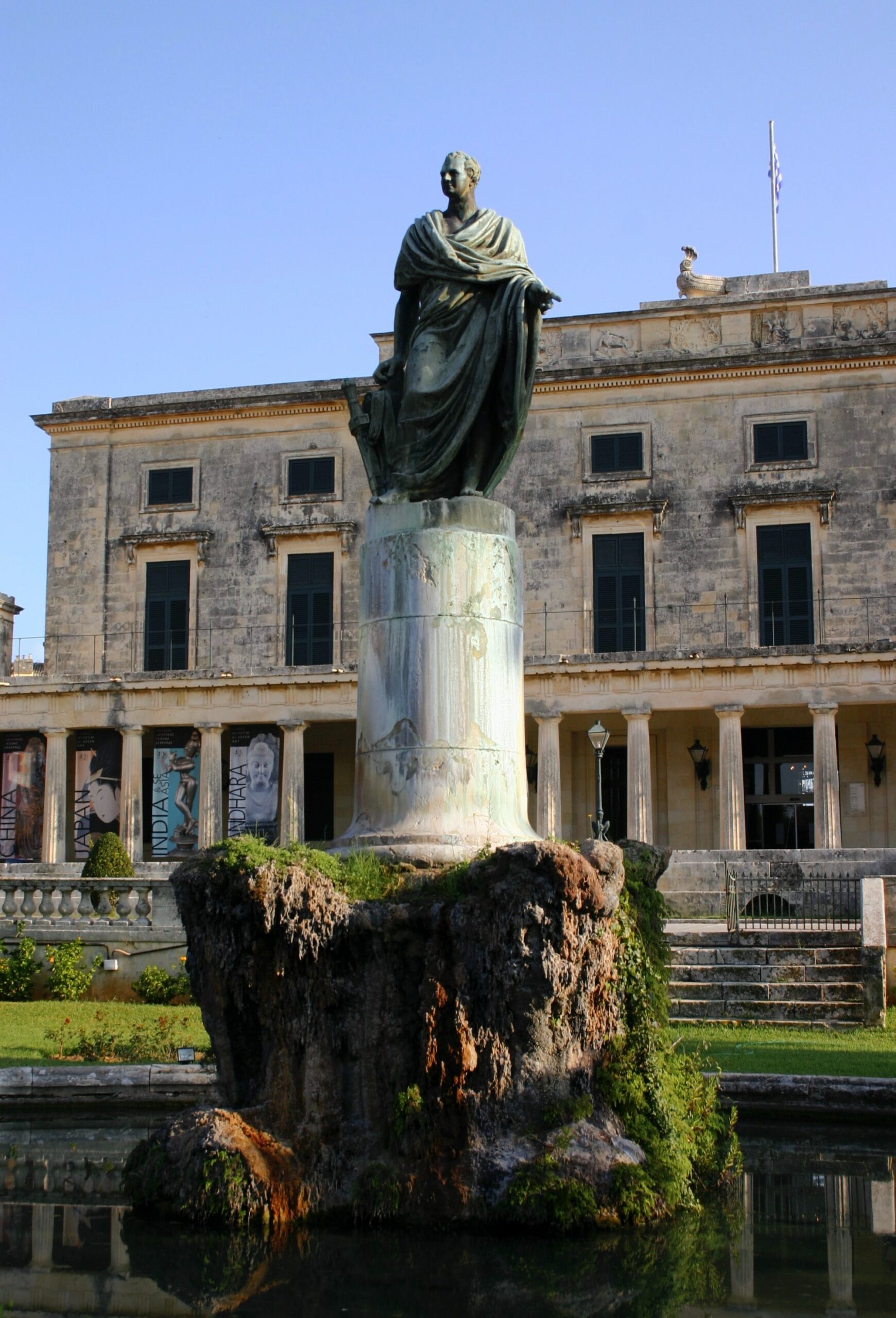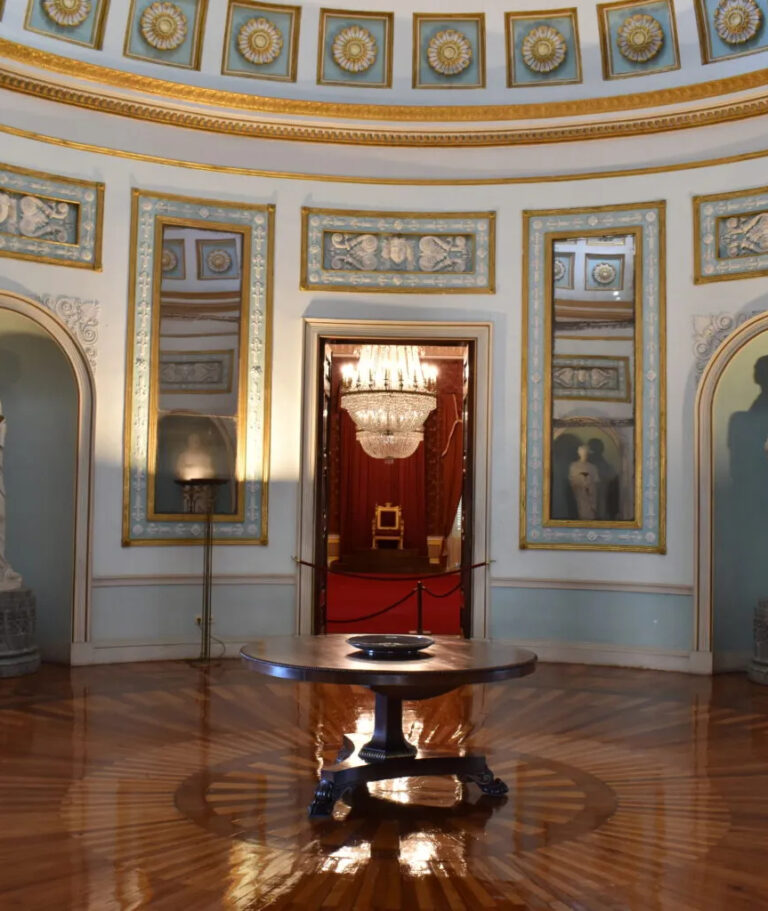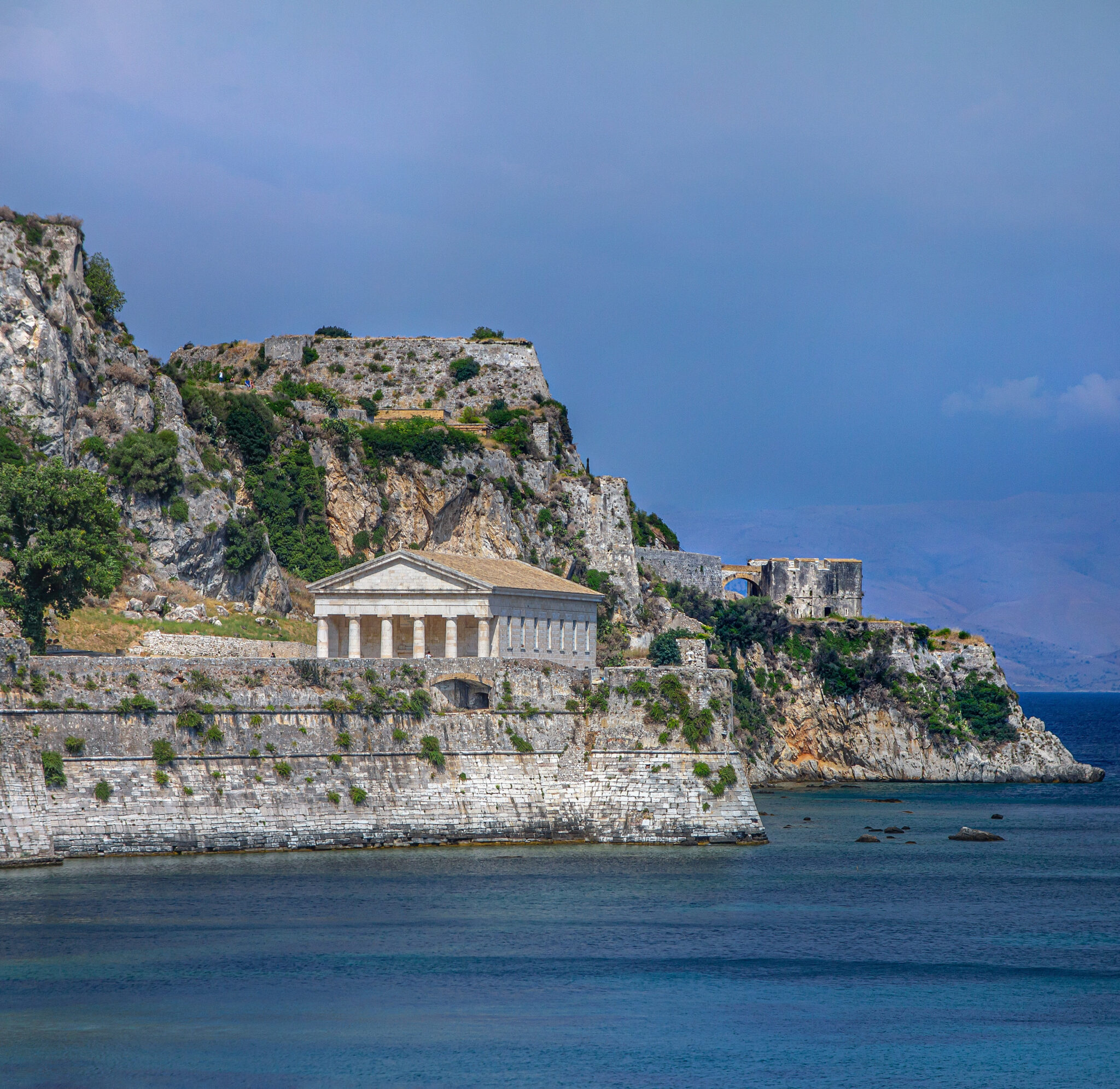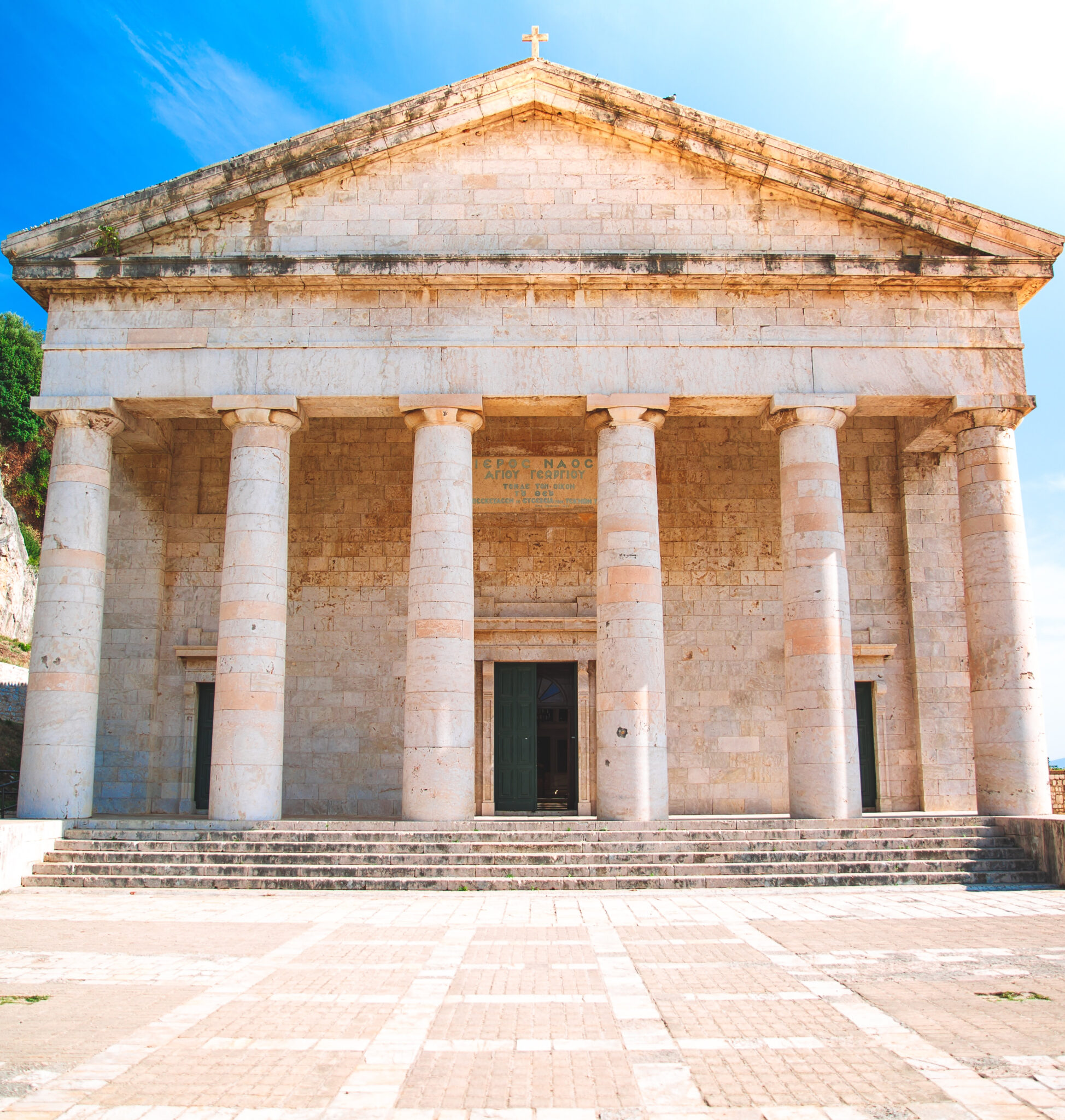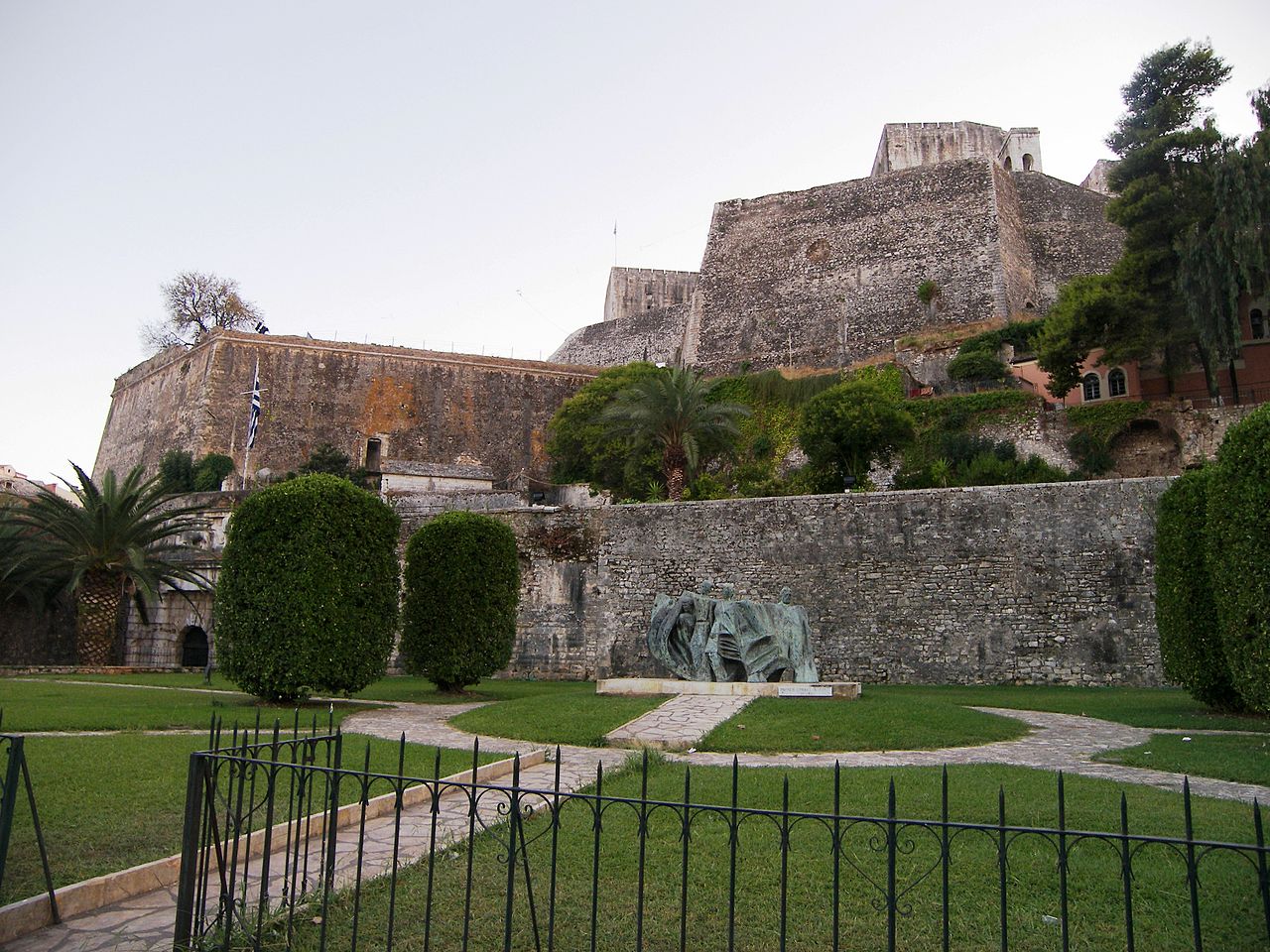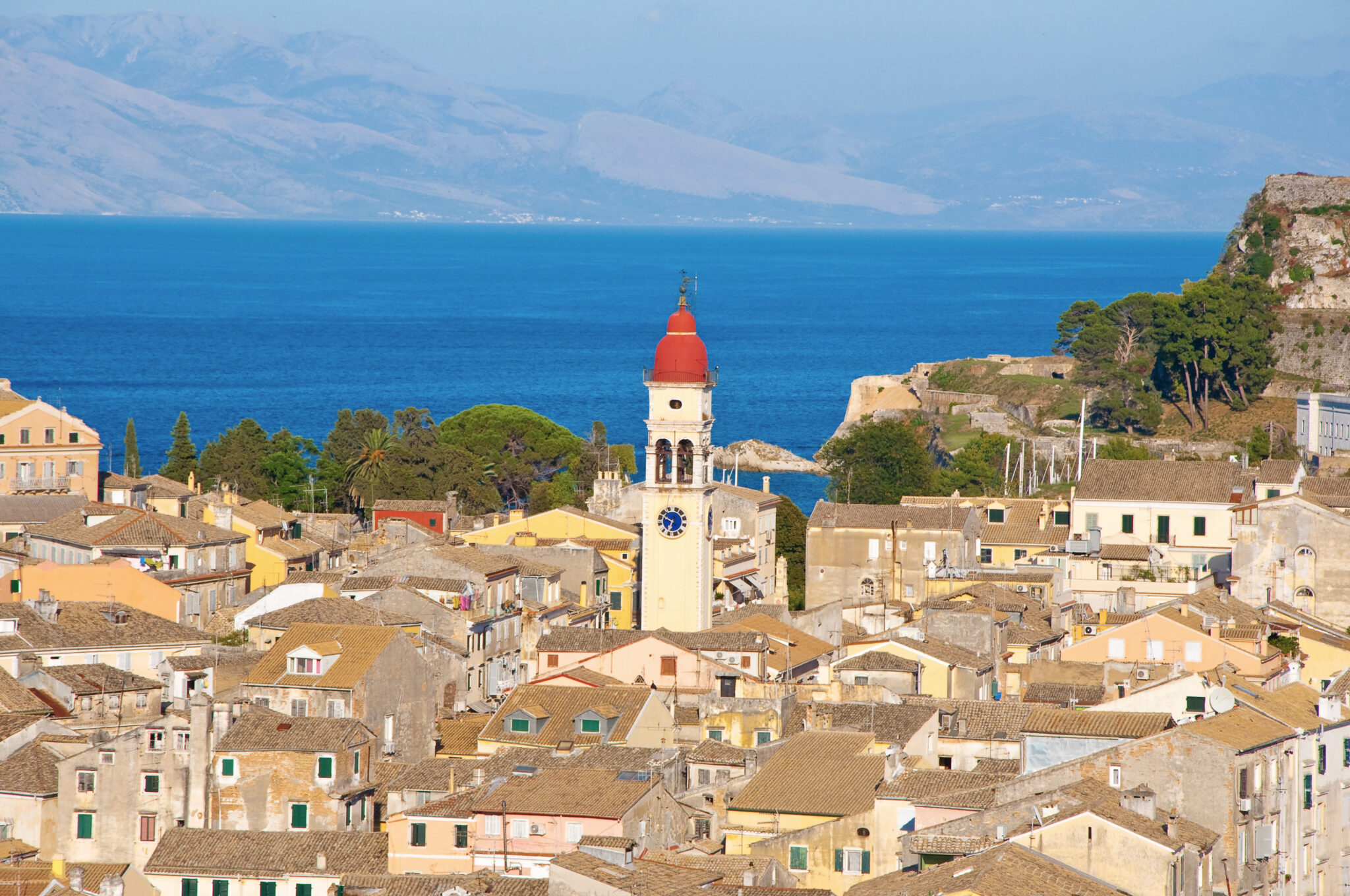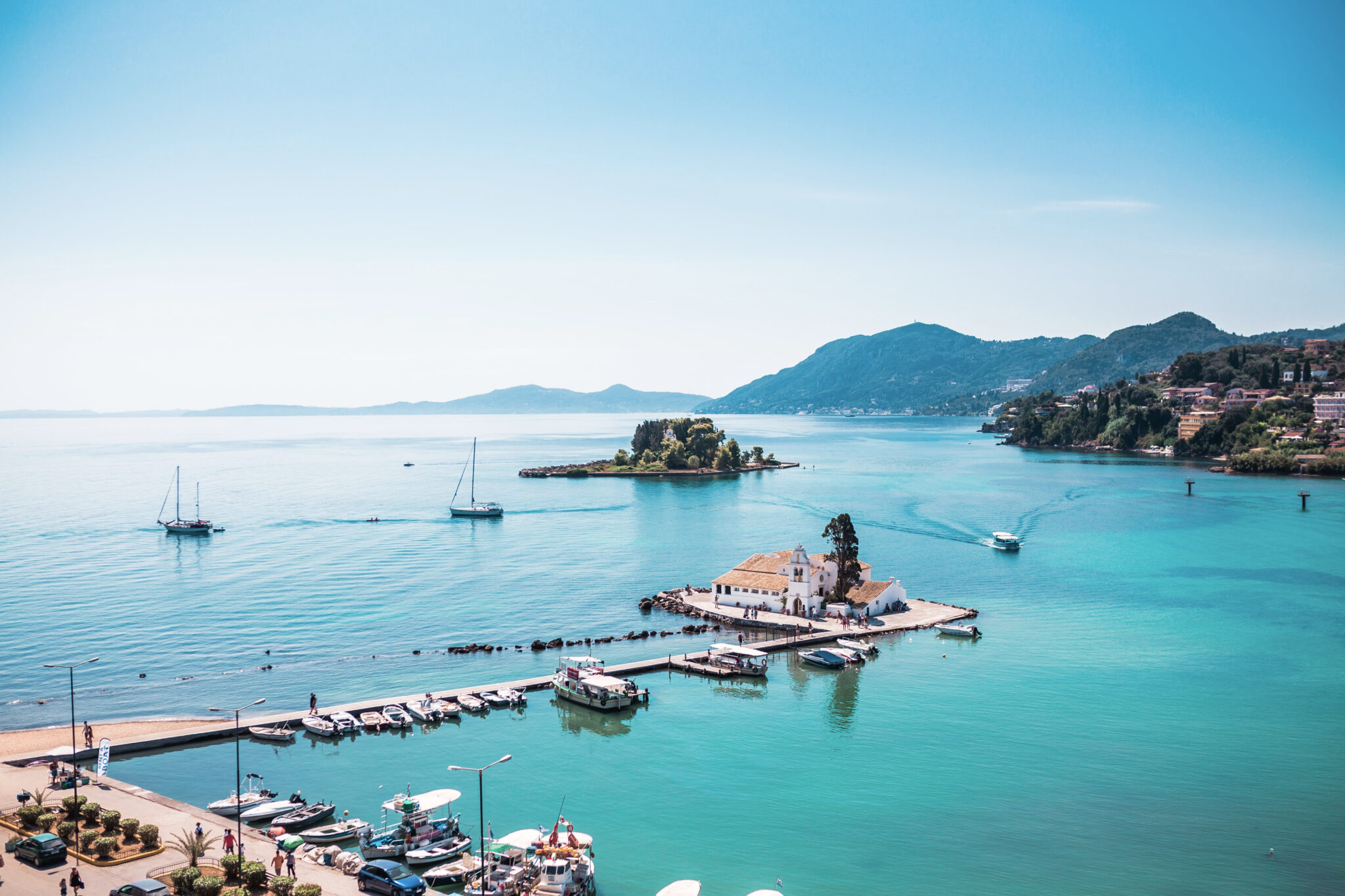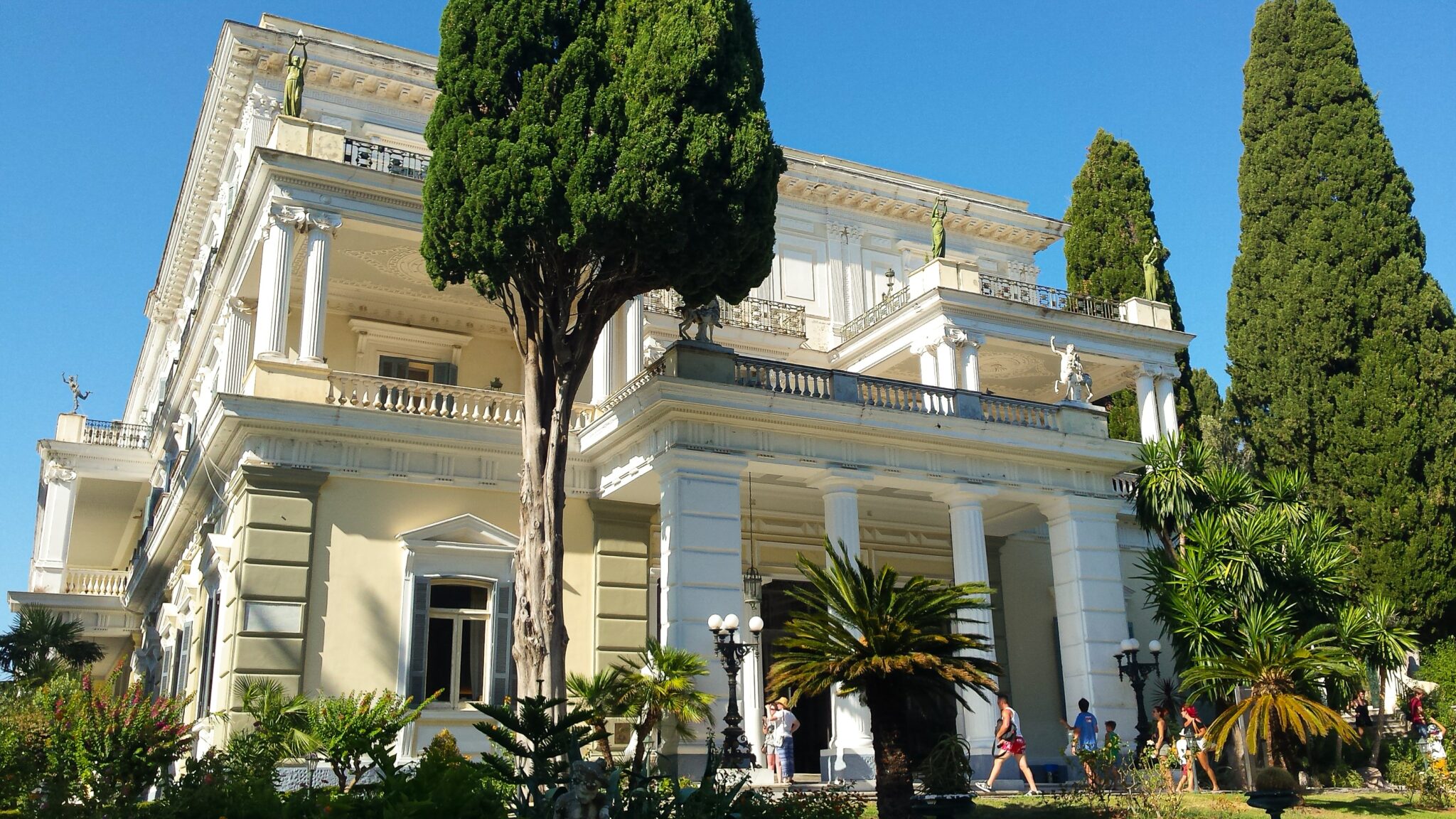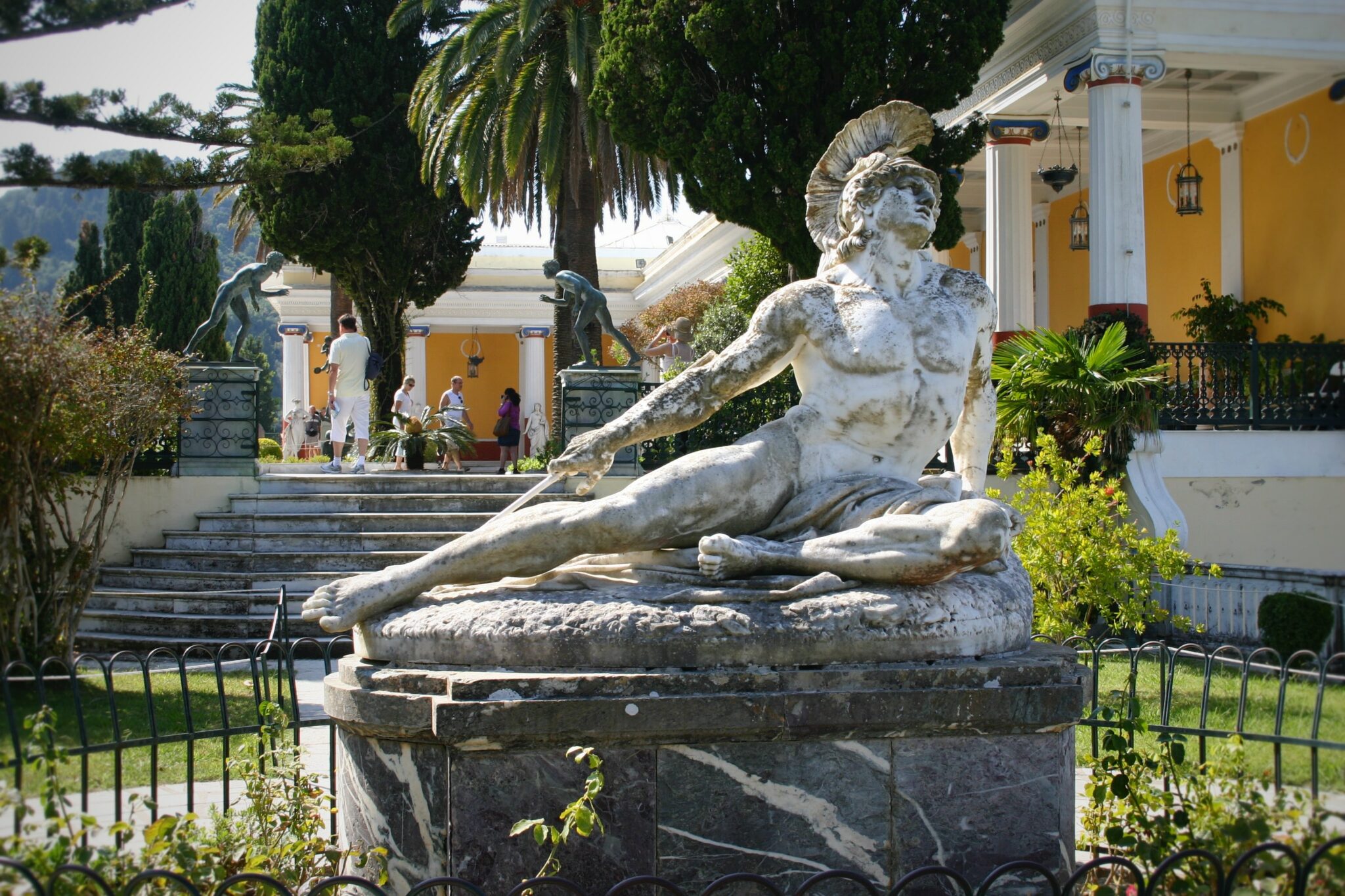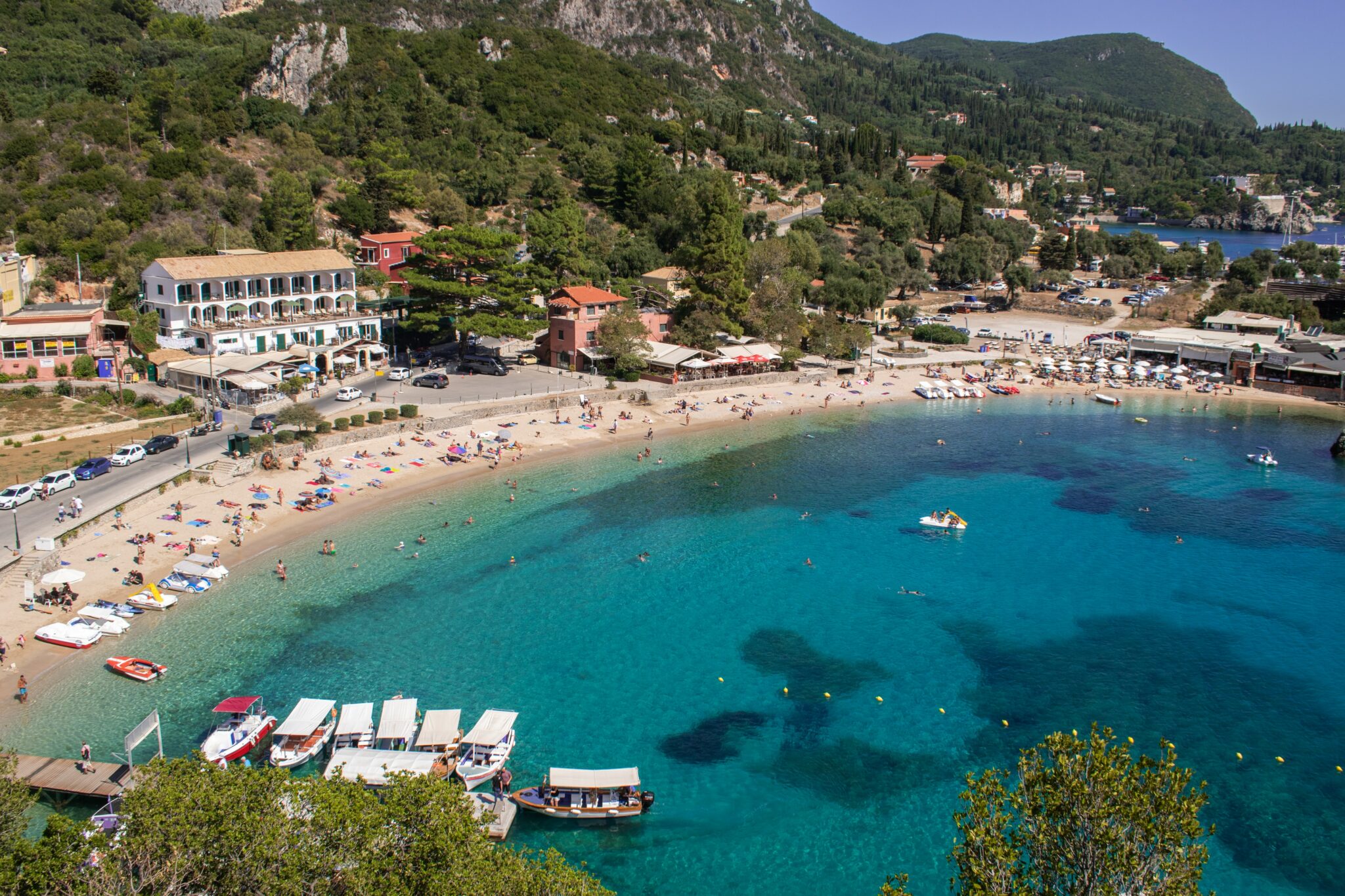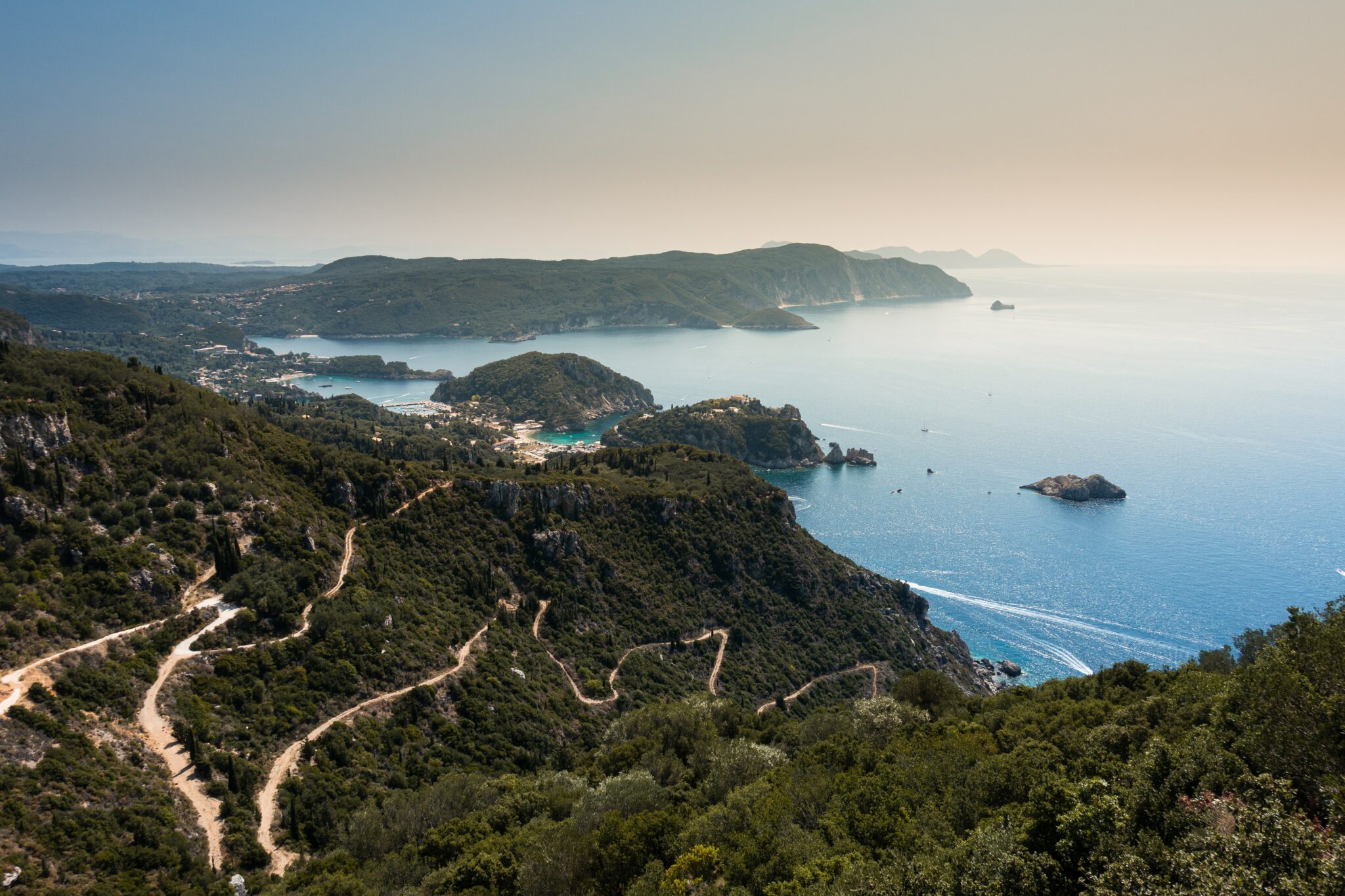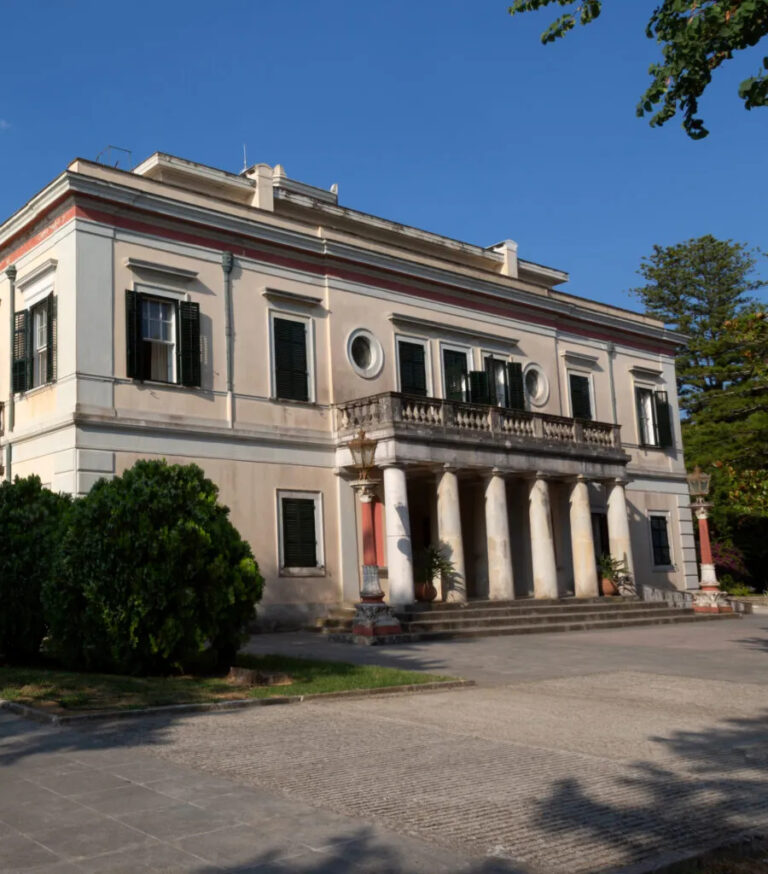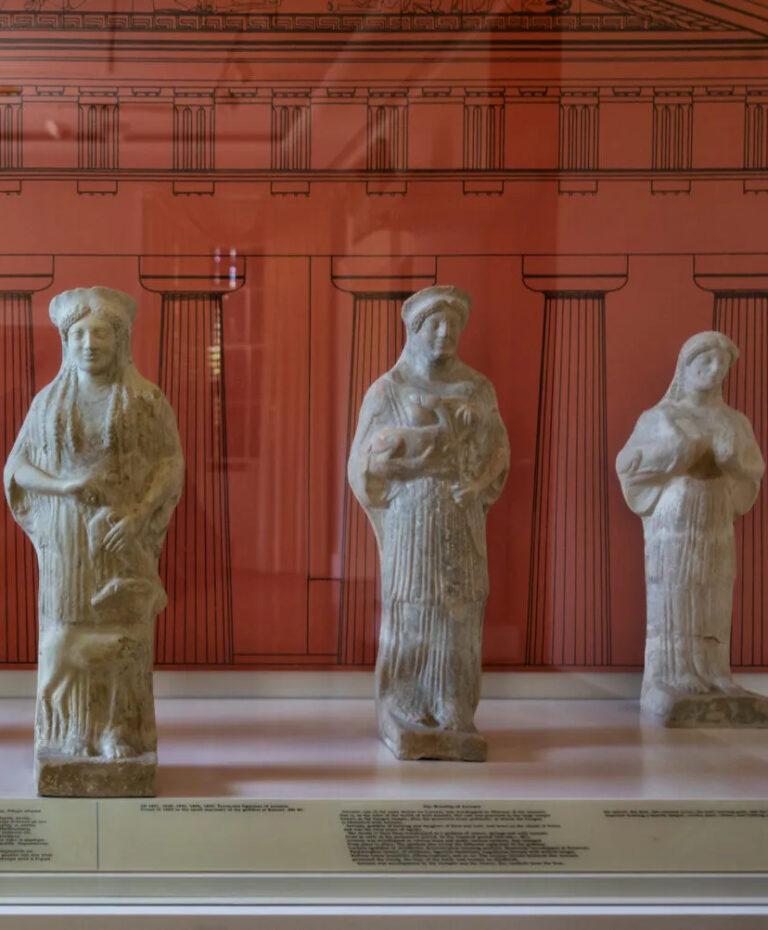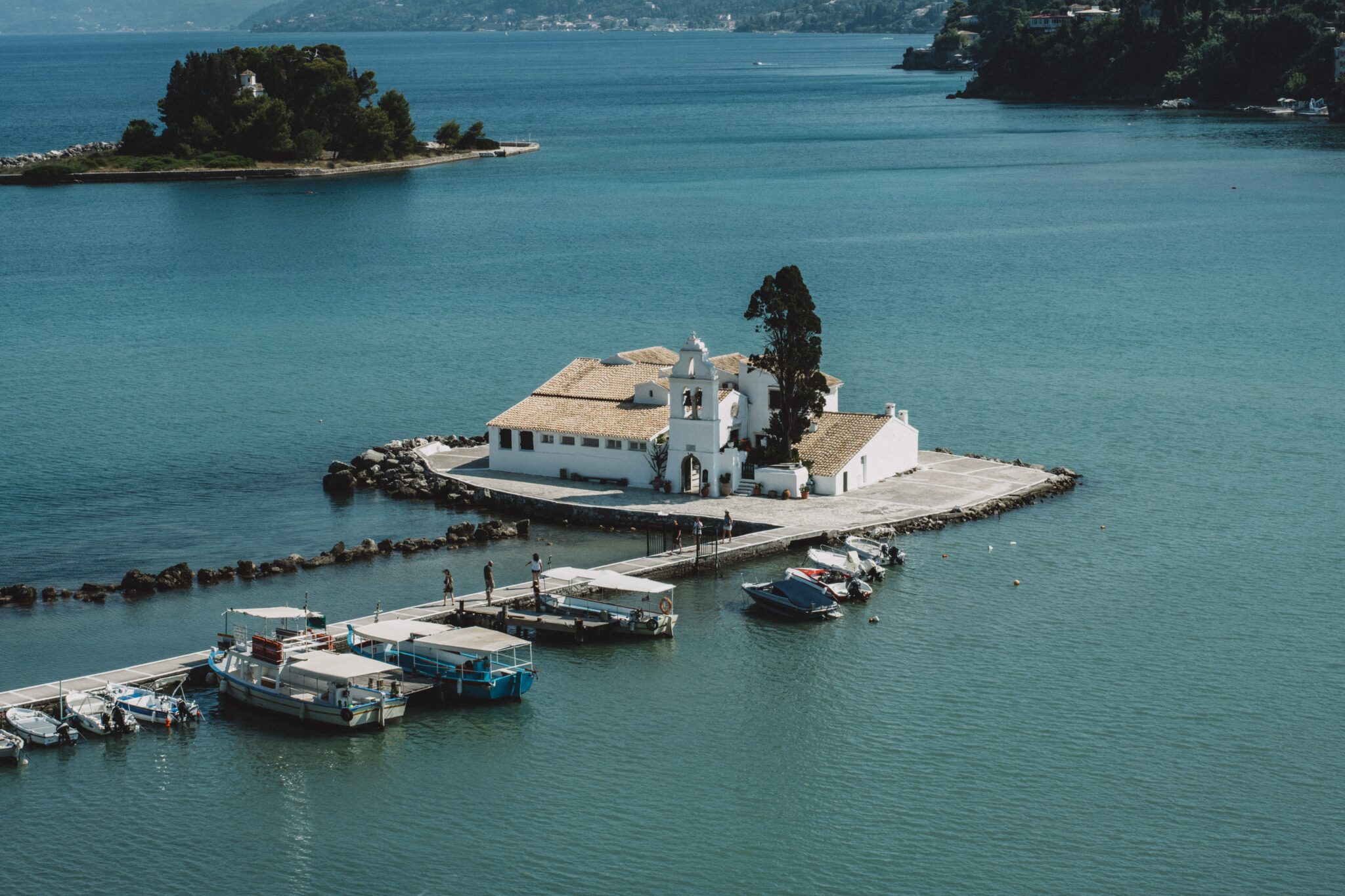Corfu Town, located on the eastern coast of the Greek island of Corfu, is a UNESCO World Heritage Site and a must-visit destination for anyone interested in history and culture. The town’s beautiful architecture reflects its varied history, having been conquered by numerous empires throughout the centuries.
Visitors can explore the town’s many historic sites, including the Spianada, the Liston, the Palace of Saints Michael and George, the Old and New Fortresses, the church of Saint Spyridon, and the Achilleion Palace. Corfu Town also serves as a great starting point for exploring other parts of the island, including Paleokastritsa, Palia Perithia, and the Diapontic Islands.
The Spianada and the Liston
The Spianada is the largest square in the Balkans and is a popular starting point for tours of the city. On its western side is the Liston, a well-known spot for strolling and enjoying coffee. The Liston was created in 1810 and was inspired by the Parisian Rivoli Street. It is home to many cafes and restaurants located under its arches and elegant lanterns. On the south side of the Spianada, visitors can sit and watch a game of cricket, a rare sight in Greece. The Hellenic Cricket Federation has its headquarters in Corfu.
The Palace of Saints Michael and George
This historic building was built between 1819-24 by the English conquerors of the island. It served as the residence of the English Commissioner Thomas Maitland and the headquarters of the English Commission, as well as the headquarters of the Battalion of Saints Michael and George. Between 1864 and 1969, it was the winter residence of the former royal family. The palace is known for its impressive architecture and is home to several cultural attractions, including the Municipal Gallery of Corfu, which features works by local artists, and the Asian Art Museum. The palace is surrounded by gardens and is also home to the monument to Thomas Maitland, a rotunda with Ionic columns that was built in 1816 to commemorate the arrival of the English Commissioner.
The Old Fortress of Korifo
Also known as the Old Fortress of Corfu, it is located on a peninsula with two peaks. It wa built between 1386 and 1797 by the Venetians, who fortified the two hills and the rocky coast with strong walls and a deep ditch called the Contra Fossa. The fortress contains two Venetian towers, Castel de Terre and Castel de Mare, as well as ruins of gun emplacements, barracks, gunpowder magazines, and underground tunnels. The highest point of the fortress was home to the first lighthouse of the Greek seas, and on its south side is the church of St. Agios George, built by the English in 1840. The Contra Fossa is now used as a fishing boat launch and the bridge that crosses it is a popular scenic walk.
The New Fortress of Corfu
Located on the hill of Agios Markos near the old port of the city, it was built by the Venetians between 1576 and 1645. The purpose of the New Fortress was to protect the Exopolion (the settlement outside the Old Fortress) and the port. It has two fortification zones, including the Sette Venti bastions on the highest level. When the New Fortress was completed and connected to the Old Fortress through coastal fortifications, it formed a powerful defensive system with two autonomous poles that made Corfu virtually impregnable. Visitors to the fortress can pass through galleries, vaulted corridors, and battlements, and see gun emplacements, portals, and Latin inscriptions. From the top of the fortress, there is a spectacular panoramic view of the city and the sea.
Saint Spyridon
The patron saint and protector of the island of Corfu in Greece. The church of Saint Spyridon was built in the 16th century to house the indestructible skeleton of the saint, which was brought to the island by a priest from Constantinople in 1456. The bell tower of the church dates back to 1590 and is similar in design to the bell tower of St. George of the Greeks in Venice. The golden urn of the saint is kept inside the sanctuary of the church, which is visited by many pilgrims each year. Saint Spyridon is traditionally believed to be a miracle worker who protected the city from the plague epidemic, and the Turkish siege of 1716. The large procession of the tabernacle takes place on Palm Sunday, and all the Philharmonic Orchestras of Corfu participate in the spectacular event.
The small islet of Pontikonisi
Also known as Mouse Island, it is located just off the coast of Kanoni and is connected to the mainland by a footbridge. The island is home to the Vlaherna Monastery, a 17th-century religious building, and the Pantokrator, a Byzantine monastery dating back to the 11th century. Although a popular destination, Mouse Island is protected as a Natural Monument and visitors are not allowed to disembark.
The village of Perama
From the pier at Kanoni, there is another footbridge that crosses the Chalkiopoulou Lagoon and leads to the opposite coast. Perama is a popular holiday settlement with a swimming beach.
The Achilleion
The palace, about 10 kilometres (6.2 miles) from the town of Corfu, was built between 1889 and 1891 as a holiday resort for Empress Elizabeth of Austria-Hungary, also known as “Sissy.” It was designed in the Pompeian style with strong neoclassical elements and is surrounded by gardens decorated with pergolas, fountains, and statues inspired by Greek mythology.
Sissy, who was deeply affected by the death of her son, Prince Rudolph, named the palace after her beloved hero, Achilles. She lost her life in 1898 when she was murdered by an Italian anarchist in Geneva. The Habsburgs later sold the palace to their ally, William II of Germany, who did not get to enjoy it due to the outbreak of World War I. However, he did manage to place a bronze statue of Achilles in the garden. The interior of the palace is impressive, with a luxurious museum building and an Ionic peristyle (columned porch) with statues of the Nine Muses and busts of Greek philosophers. The garden also features a famous statue of “Achilles the Immortal” by the sculptor Ernest Herter. The palace has since been restored to its former glory and is used for cultural events.
Paleokastritsa and Angelokastro
The region of Paleokastritsa is known for its six beautiful bays, which can become crowded in the summer. It is also believed to be the location of the palace of the mythical king of the Phaeacians, Alkinoos, as described in Homer’s Odyssey. According to legend, Odysseus was hosted at the palace during his journey to Ithaca.
The Monastery of Panagia
In Paleokastritsa, you can visit the monastery of Panagia, which offers panoramic views of the sea. The monastery was founded in 1228, but the current building dates from the 16th to 18th centuries. It houses a museum with Byzantine and post-Byzantine artefacts, including icons, holy vestments, books, and utensils.
Angelokastro
A Byzantine castle located on a high peak. It was one of three castles that protected the island and was considered one of the most important fortresses in the area. It is believed to have been fortified as early as the 5th to 7th centuries and features defensive enclosures, walls with ramparts, and an acropolis. At its highest point stands the Byzantine church of Taxiarchis. You can visit Angelokastro by following a path that leads to the castle, passing by the church of Agios Ioannis and other defensive structures along the way.
Mon Repos
This large estate is located in Paleopolis, a suburb of the town of Corfu. It was originally built as a summer residence for the English commissioner Frederick Adam and his Corfiot wife, Nina Palatianou, in 1830. The mansion combines elements of ancient Greek elegance with the romantic style of the time. However, Adam and his wife did not live in Mon Repos for long, as Adam was transferred to the Indies in 1832. After Adam’s departure, the estate became the home of the School of Fine Arts, directed by the sculptor Paul Prosalentis. The open land was also turned into a public botanical garden. Today, the mansion houses the Paleopolis Museum, which showcases findings from excavations in the area, objects related to the use of the building by its blue-blooded inhabitants, and information about the rare flora of the estate, which includes over 2,000 species of plants. Mon Repo is located about 3 kilometres (1.8 miles) from the town of Corfu.
The Kaiser Observatory
Is a building located on the top of a hill above the village of Peleka on the island of Corfu in Greece. It was built by William Kaiser in 1908 and offers panoramic views of the olive grove and the west coast of the island. The observatory is known for its beautiful sunset views and is a popular destination for tourists and locals alike. To reach the observatory, visitors must climb a set of stairs and can then sit on the benches on the balcony to enjoy the views.
Kanoni
Kanoni is a small peninsula located on the southeastern coast of the island, known for its beautiful views and iconic cannon. It is also home to a busy port area with a number of hotels, restaurants, and cafes.
Palia Perithia
Is a village located at the foot of Mount Pantokratoras on the island of Corfu in Greece. The village was built in 1347 and has preserved many elements of the Venetian rule, including several churches. It gets its name from the nine churches that surround it, most of which are private. The most notable of these churches are Agios Nikolaos and Agios Jacob the Persian, both of which have large double bell towers. Palia Perithia is divided into two districts: the upper part, which includes the square, and the village beyond, which extends beyond the stream. Visitors can explore the village by walking through these two districts and then stopping for a meal at one of the traditional taverns. The village is known for its beautiful plateau, full of trees and water, and is a popular destination for tourists and locals alike.
The Diapontic Islands
Are a group of three small islands located in the northwest of the island of Corfu in Greece. The islands, which include Mathraki, Ereikoussa, and Othoni, are popular with boaters and are known for their picturesque beaches with fine sand and clear waters. Ereikoussa is the closest island to Corfu, with its only port being Porto. There are also beaches at Cape Stamoleka. Othoni is the largest and most developed of the Diapontic Islands, with a port in Ammos and the impressive Calypso beach, known for its white sand, caves, and rocky formations. Mathraki is the smallest of the islands and has a port and beach at Plakes and Portello. Boats to the Diapontic Islands depart from Sidari, Agios Stefanos, and Corfu town.
Read also:
The Palace of St. Michael and St. George: A great monument on the island of Corfu
Corfu Museum of Asian Art: A cultural journey to the Far East



